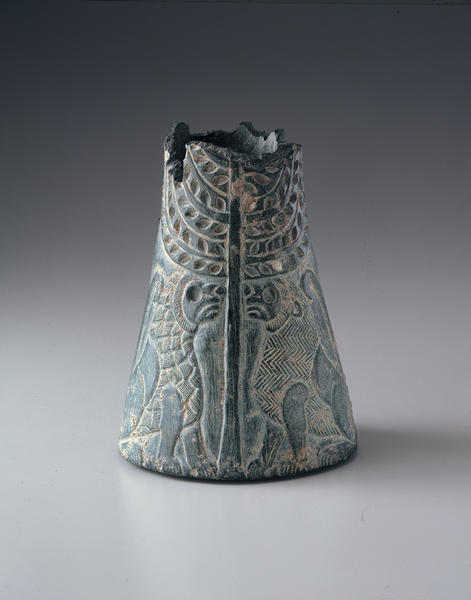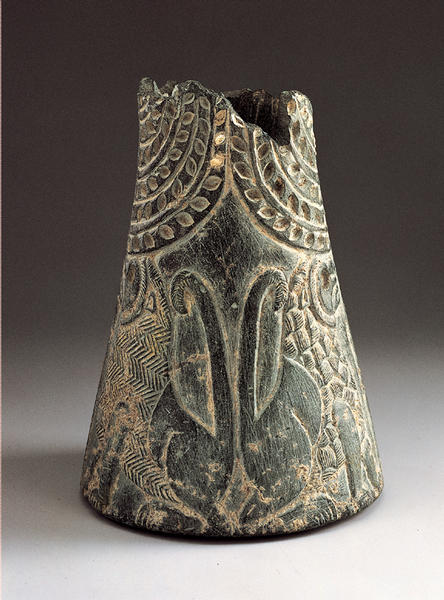Vessel
- Eastern Iran or Bactria
- Early to mid-3rd millennium B.C.
- Chlorite schist with turquoise inlays
- H-20 D-14
Catalogue Entry
This stone vessel--now broken--narrows as it rises, displaying two pairs of seated lions in low relief, each pair flanking a simple tree with curving, symmetrical branches. Although the stance and the flat, linear style of each lion are virtually identical, the creatures differ in the patterns given to their heavily furred forequarters. On one side the tufted pattern resembles basketwork, while the felines opposite bear a horizontally worked herringbone design. The large, round eyes of each cat were once inlaid, as were the pointed oval leaves of the trees. Several of the leaves still retain their now-pale stone filling. Recent analysis of the damaged surface of one inlay reveals that the stone is turquoise, indicating that the vessel, in its undamaged state, originally was characterized by a vibrant polychromy.
Carved chlorite vessels have been excavated from sites in Mesopotamia and in Central Asia, as well as along the Persian Gulf, for over half a century. The material and the style of carving set these works apart from locally produced stone objects, but their place of manufacture remained unknown. We now know that some of these bowls and vases were produced in eastern Iran and perhaps in northern Afghanistan (ancient Bactria). Excavations at Tepe Yahya in southeastern Iran have revealed one production center,1 and others undoubtedly await discovery. Unfortunately, none of the fragmentary vases recovered from Tepe Yahya exactly parallels the Shumei vessel in shape and decoration. Closer in form and general style are broken vases uncovered at Nippur in Mesopotamia and at Mari on the Euphrates River, between Mesopotamia and Syria2--exotic exports that traveled far from their place of origin. The lions on the Shumei vase are an indication that this vessel, too, was made for the Mesopotamian market, as the heavy-maned western Asiatic lion was unknown on the Iranian plateau and in the Central Asian uplands. This unfamiliarity with the living species may explain the artificial rendering of the lions' manes.
TSK
1. See Metropolitan Museum 1996, p. 10, fig. 1; Lamberg-Karlovsky and Kohl 1971, pp. 15-18.
2. See Orthmann et al. 1975, p. 185, pl. 76a,b.

